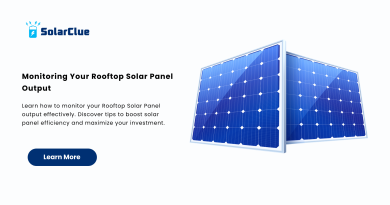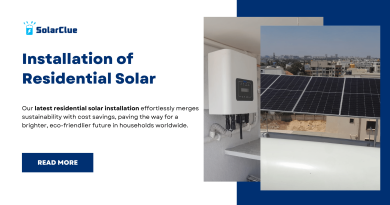How Much Watt Solar Panel Required To Charge 150ah Battery?
Harnessing solar power to charge a battery is an eco-friendly and cost-effective way to ensure a reliable energy supply. However, determining the optimal number of solar panels required to charge a 150Ah battery can be complex. This guide explains the key factors influencing solar panel requirements, provides step-by-step calculations, and offers practical advice on system design and optimization.
Table of Contents
- 1 Understanding Battery Capacity and Charging Requirements
- 1.1 Calculating Solar Panel Wattage Based on Battery Specifications
- 1.2 Optimizing Panel Placement for Maximum Sunlight Exposure
- 1.3 The Role of Inverter Efficiency in Charging Time
- 1.4 Considering Battery Type and Charging Characteristics
- 1.5 Balancing System Size with Energy Needs and Budget
- 1.6 The Impact of Location and Climate on Solar Panel Output
- 1.7 Additional Factors Affecting Solar Panel Requirements
- 1.8 Tools and Software for Solar Panel Sizing
- 1.9 Case Studies of Solar Panel Systems for 150Ah Batteries
- 1.10 Example Calculation of Solar Panels Needed for a 150Ah Battery
- 1.11 Conclusion
- 1.12 FAQs
Understanding Battery Capacity and Charging Requirements
Battery Capacity (Ah): The capacity of a battery, measured in amp-hours (Ah), represents the total charge it can store. A 150Ah battery can deliver 150 amps of current for one hour or 15 amps for 10 hours, depending on the load.
Battery Voltage (V): The voltage of the battery affects the total energy it can store. Common battery voltages include 12V, 24V, and 48V. For a 12V battery, the total energy capacity is calculated as:
Total Energy (Wh)=Battery Capacity (Ah)×Battery Voltage (V)
150×12=1,800Wh150
Charging Time: The time available to charge the battery also influences the number of solar panels needed. Shorter charging times require higher wattage.
Calculating Solar Panel Wattage Based on Battery Specifications
To determine the required solar panel wattage, consider the battery’s energy capacity and desired charging time.
Required Solar Panel Wattage (W)=Total Energy (Wh)/Charging Time (Hours)
Example Calculation:
- Battery Capacity: 150Ah
- Battery Voltage: 12V
- Charging Time: 6 hours
Required Wattage=150×12/6=300W
This means you would need at least 300W of solar panels to charge the battery in 6 hours under optimal conditions.
Optimizing Panel Placement for Maximum Sunlight Exposure
Panel Orientation and Tilt: The efficiency of your solar panels depends on how well they are oriented and tilted toward the sun. For maximum efficiency, the panels should face true south (in the Northern Hemisphere) or true north (in the Southern Hemisphere) and be tilted at an angle equal to your latitude. Adjusting the tilt seasonally can further optimize solar absorption.
The Role of Inverter Efficiency in Charging Time
Inverter efficiency is critical because it affects the amount of usable power that reaches the battery. Inverters typically operate at 85-95% efficiency. A lower efficiency means more solar panel wattage is needed to compensate for energy losses.
Adjusted Wattage Calculation:
Adjusted Wattage=Required Wattage/Inverter Efficiency
Example:
- Required Wattage: 300W
- Inverter Efficiency: 90%
Adjusted Wattage=300W/0.9=333.33W
Considering Battery Type and Charging Characteristics
Different types of batteries (e.g., lead-acid, lithium-ion) have different charging characteristics, such as charge acceptance rates and depth of discharge. Lithium-ion batteries, for example, are more efficient and can be charged faster than lead-acid batteries, potentially reducing the number of panels required.
Balancing System Size with Energy Needs and Budget
When sizing your solar panel system, balance the size of the system with your energy needs and budget. Larger systems offer faster charging and more reliability but come at a higher cost. Conversely, smaller systems are more affordable but may require longer charging times or additional panels during periods of low sunlight.
The Impact of Location and Climate on Solar Panel Output
Location: The amount of sunlight your location receives directly affects the performance of your solar panels. Regions closer to the equator typically receive more sunlight, reducing the number of panels needed.
Climate: Cloudy or rainy climates reduce solar output, potentially requiring additional panels to meet energy needs. Seasonal variations also play a role, with lower sunlight during winter months.
Additional Factors Affecting Solar Panel Requirements
System Losses: Consider potential losses due to wiring, shading, and temperature effects, which can reduce overall system efficiency.
Daily Energy Consumption: The more energy you consume daily, the more solar panel capacity you will need.
Battery Efficiency: Some energy is lost during the battery charging process, so consider the battery’s charge efficiency when calculating panel requirements.
Tools and Software for Solar Panel Sizing
Several online tools and software programs can assist in accurately sizing your solar panel system. These tools take into account your location, battery specifications, and energy usage patterns to provide a tailored solar panel recommendation.
Case Studies of Solar Panel Systems for 150Ah Batteries
Case Study 1: Rural Home with a 150Ah Battery
- Location: Southern India (High sunlight availability)
- System: 4 x 100W monocrystalline panels
- Result: Consistently charges the battery within 6 hours during peak sunlight, providing sufficient power for daily needs.
Case Study 2: Urban Apartment with a 150Ah Battery
- Location: Northern Europe (Low sunlight availability)
- System: 6 x 100W polycrystalline panels
- Result: Requires additional panels due to lower sunlight but successfully powers essential devices.
Example Calculation of Solar Panels Needed for a 150Ah Battery
| Parameter | Value | Calculation |
|---|---|---|
| Battery Capacity | 150Ah | |
| Battery Voltage | 12V | |
| Total Energy Required (Wh) | 1,800Wh | 150Ah × 12V |
| Charging Time | 6 hours | |
| Required Solar Panel Wattage | 300W | 1,800Wh / 6 hours |
| Inverter Efficiency | 90% | |
| Adjusted Solar Panel Wattage | 333.33W | 300W / 0.9 |
| Number of 100W Panels Needed | 4-5 panels | 333.33W / 100W |
Conclusion
Determining the optimal number of solar panels to charge a 150Ah battery involves a detailed understanding of battery specifications, solar panel efficiency, and environmental factors. By following the calculations and considerations provided in this guide, you can design an efficient solar panel system that meets your energy needs while staying within budget. Proper planning and optimization ensure that your solar energy system will be reliable and effective in powering your home or devices.
Here at SolarClue®, we offer a smart, practical, and “beautiful” solution. You will be answered for all the questions related to Solar.
We provide all kinds of brands that are the Best Solar panels in India.
If you are the one who is planning for the solar power system. Don’t hesitate to contact our team!
Looking forward to empowering you with solar energy, just like hundreds of our other clients!
FAQs
1. How many solar panels do I need to charge a 150Ah battery?
To charge a 150Ah battery, typically, 4 to 5 x 100W solar panels are required, depending on factors like battery voltage, sunlight availability, and inverter efficiency.
2. What factors influence the number of solar panels required?
Factors include battery capacity, voltage, charging time, solar panel efficiency, inverter efficiency, and sunlight availability.
3. How does inverter efficiency affect the number of solar panels needed?
Inverter efficiency impacts the usable power for charging. A less efficient inverter requires more solar panel wattage to compensate for energy losses.
4. How important is panel orientation and tilt for solar charging?
Proper orientation and tilt maximize the panels’ exposure to sunlight, enhancing efficiency and reducing the number of panels required.
5. Can the type of battery affect the solar panel requirement?
Yes, different battery types have varying charging characteristics, influencing the required solar panel wattage.
6. How does location and climate affect solar panel performance?
Sunlight availability varies by location and season, with areas of low sunlight or frequent cloud cover requiring additional panels.
7. Is it better to oversize or undersize my solar panel system?
Oversizing your system slightly ensures adequate charging on cloudy days, while undersizing may result in insufficient energy, especially in less sunny conditions.


